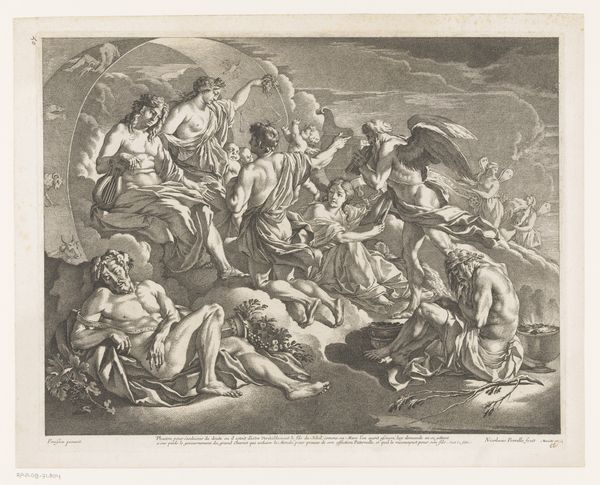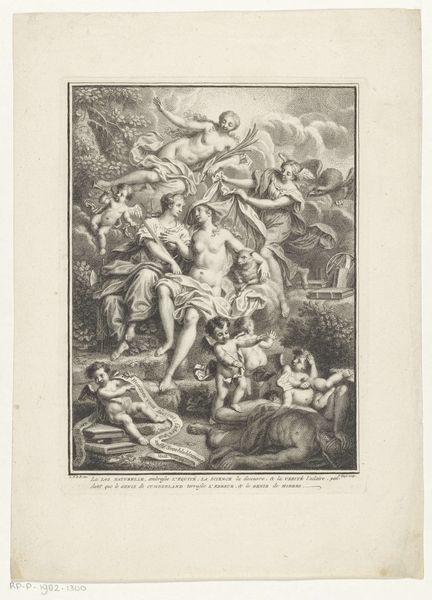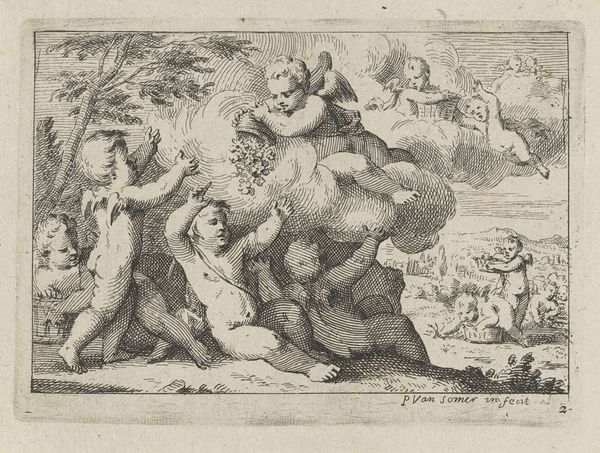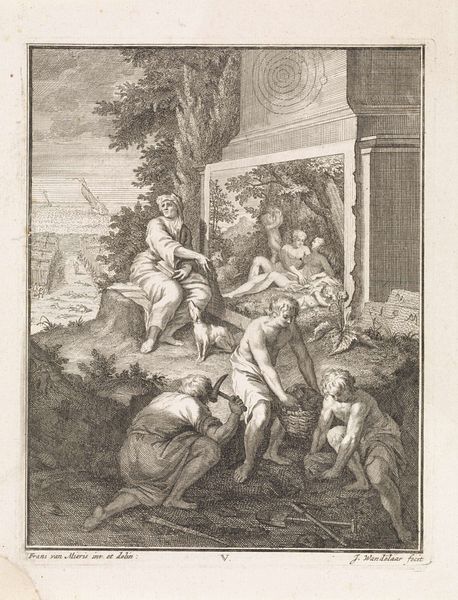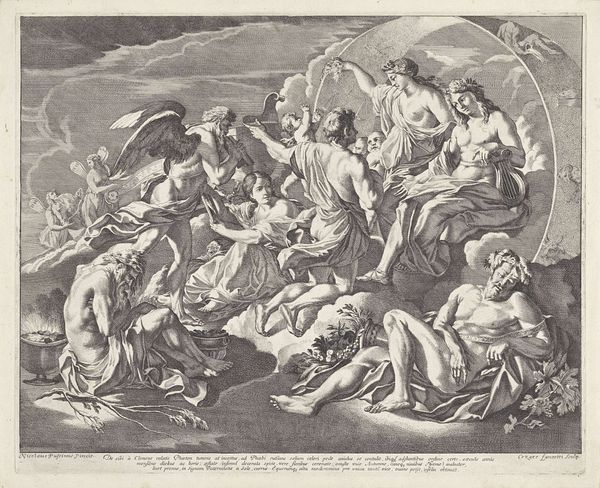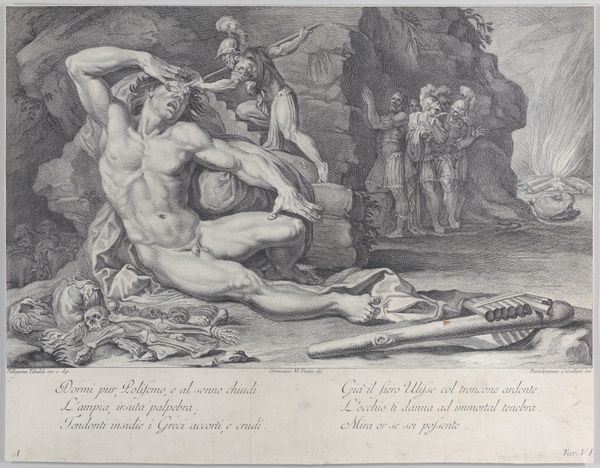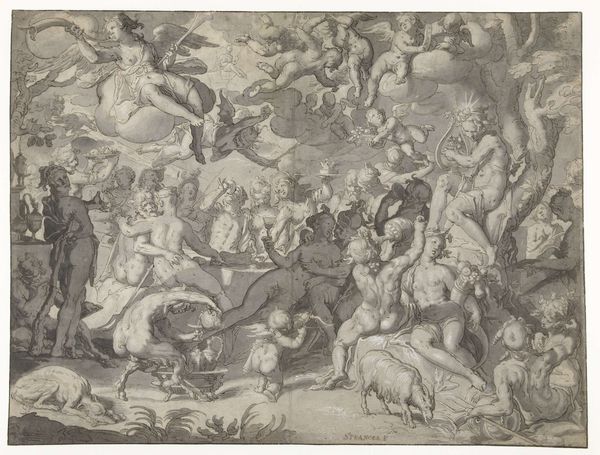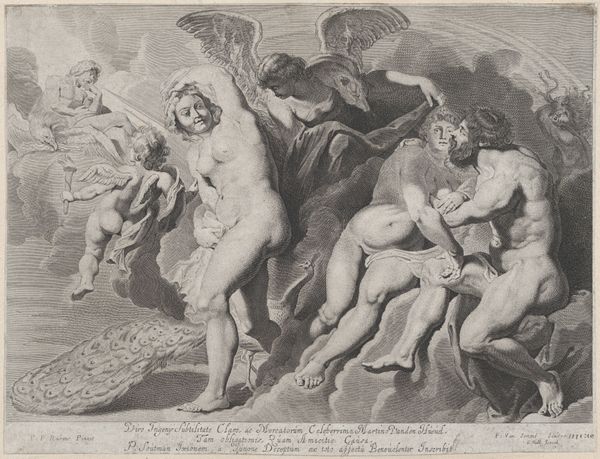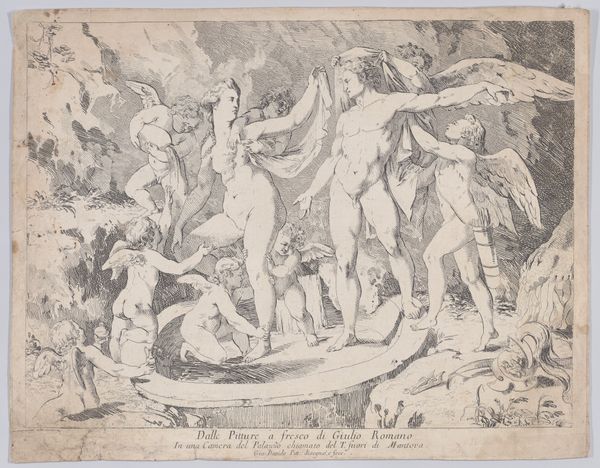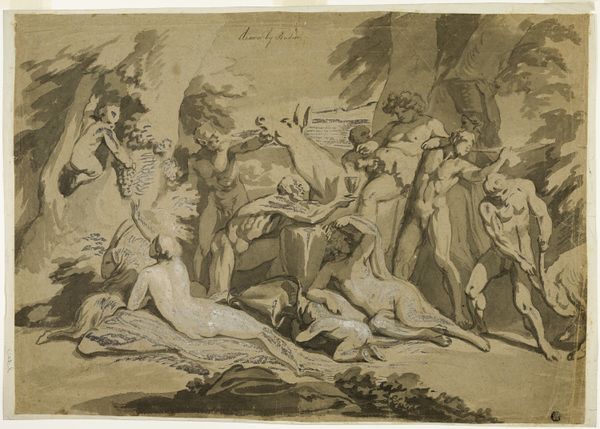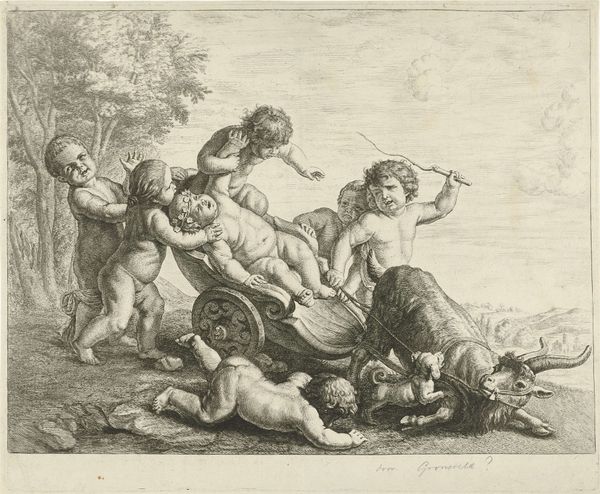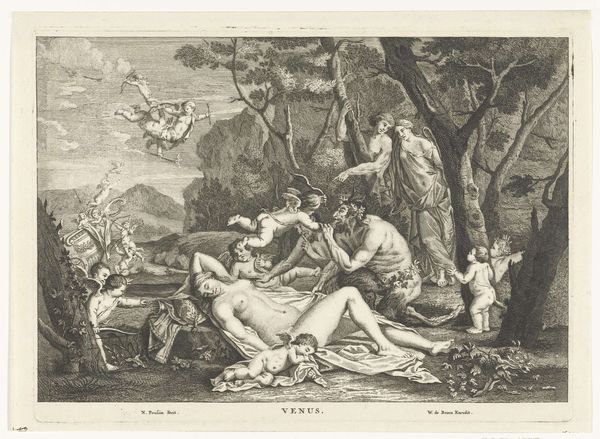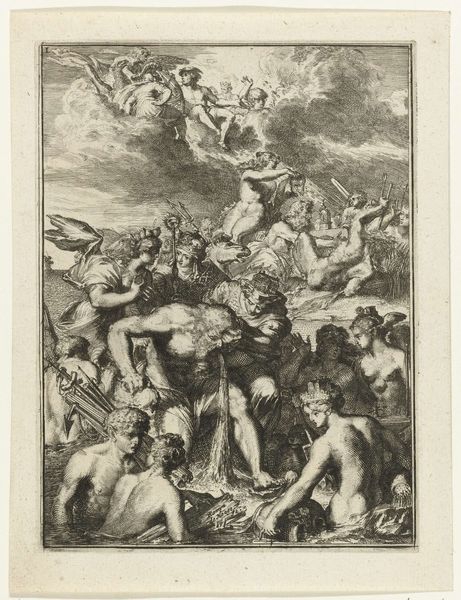
engraving
#
allegory
#
narrative-art
#
baroque
#
figuration
#
history-painting
#
engraving
Dimensions: height 362 mm, width 552 mm
Copyright: Rijks Museum: Open Domain
This print of the fall of the damned was made by Jonas Suyderhoef, probably in the mid-17th century. It's an etching, meaning that the artist would have laboriously drawn an image into a wax ground on a metal plate, and then bathed it in acid. The incised lines would then be filled with ink and transferred to paper under great pressure. In Suyderhoef's time, printmaking was essential to the distribution of images, disseminating them widely. Here, we see a dramatic scene rendered with remarkable tonal variation. Look closely, and you'll see how the density of lines is what gives the image its depth and drama. It's a powerful demonstration of how a repetitive mechanical process can be used to create something so expressive. Consider the work involved in producing this print. It would have taken countless hours to create the master plate, not to mention the labor of printing itself. In this way, the image’s drama is tied to the world of labor and distribution, reminding us that even the most seemingly rarefied artworks have humble origins.
Comments
No comments
Be the first to comment and join the conversation on the ultimate creative platform.
